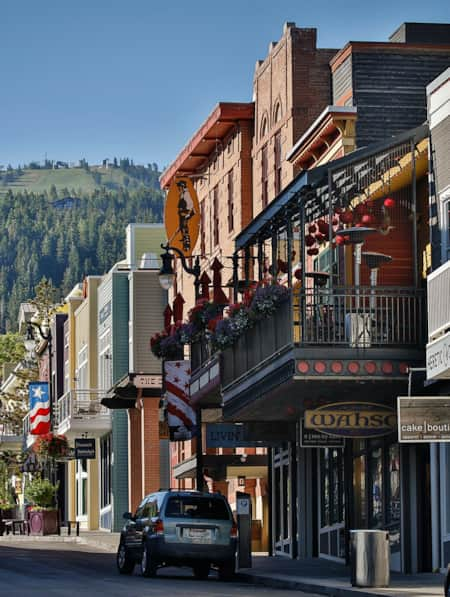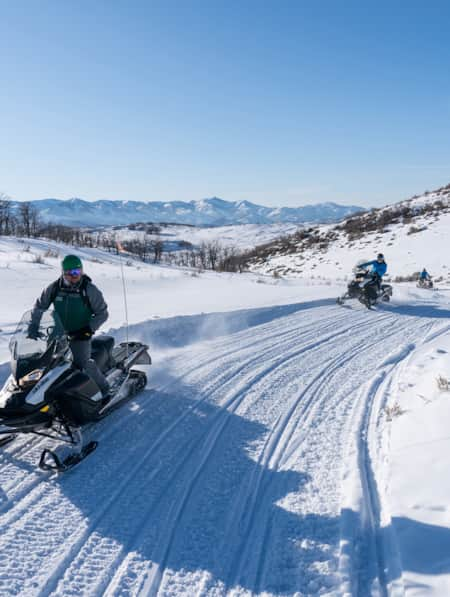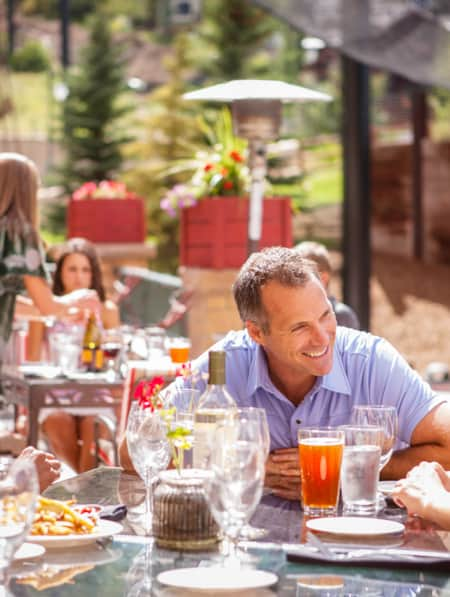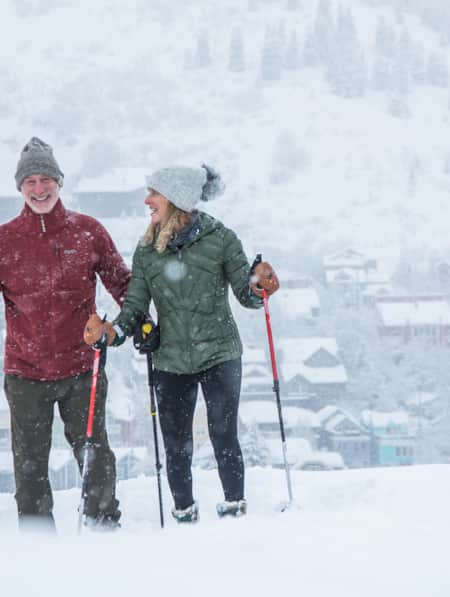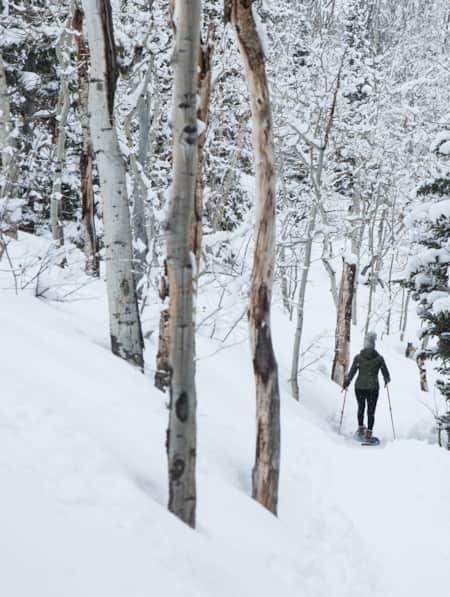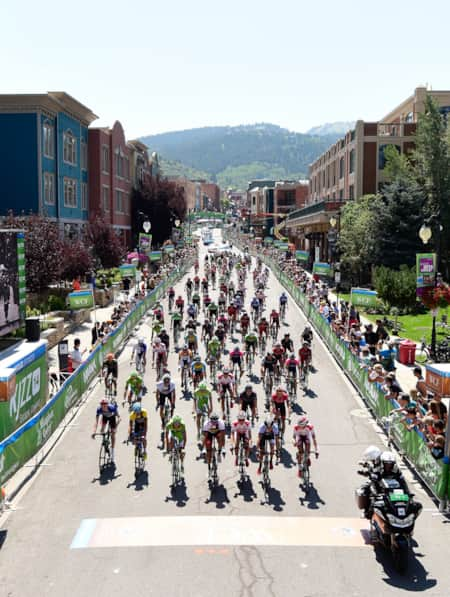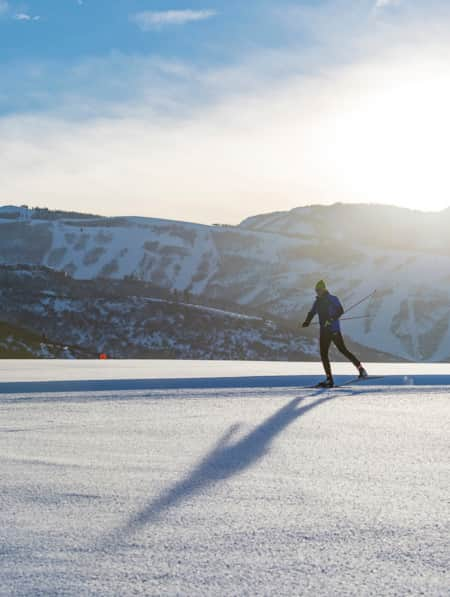Beyond the Ski Slope: Discover Park City’s Artistic Side
A town known for its world-class snow, popular concerts and visual arts festivals draws visitors throughout the year.

Park City, internationally known for its venues hosting the 2002 Winter Olympics and for its long-running starring role as the home of the Sundance Film Festival, was just another western mining town turned down on its luck in the 1950s.
That’s when Utah Gov. J. Bracken Lee thought to declare the place a ghost town, but the 500 or so locals were having none of that. A few dozen appeared at the Utah State Capitol to colorfully tell the governor off. “Do we look like ghosts?” they reportedly asked.
Today, after the silver mining town transformed itself into a world-famous ski resort town and home to Olympic venues and training facilities, Park City claims a population of more than 8,000 residents and 600,000 annual visitors. Many visitors come to ski, but the arts and cultural experiences are not to be missed.On historic Main Street, there are a variety of places to sip and stroll and feel what it might have been like to live in a tiny one-street town. In the town’s mining days, Chinese laborers worked in the mines and also supplied meals and laundry for the laborers who came from so many parts of Europe in great numbers. Over the years, town leaders have embedded those early workers into the town’s history, with street names such as Swede Alley and China Bridge (Read: 5 Places to Explore Park City's Fascinating History).

More than 23 millionaires were minted from the ore of Park City mines, including a piece of the Hearst newspaper empire. To dive deep into the town’s history, take a tour of the Park City Museum on Main Street, a building that once housed City Hall. Museum exhibits include a refurbished 1926 fire engine, as well as a back bar with a mirror that comes to life with faces of former Parkites. These images tell stories of bar fights and lawless behaviors and soccer games and the town’s Wild West past, which extended through the 1970s and 1980s and into the 1990s.
Hosted in Park City every February, the Sundance Film Festival is a testament to the town’s artistic legacy. Park City has nurtured arts venues from its earliest days, building an opera house when the rest of the town was mostly made of shacks. Through the years, fire and snow damaged the building. Yet the Egyptian Theatre, which opened on the same Main Street site in 1926, still anchors the town’s colorfully expanding arts scene, as locals and visitors attend concerts and performing arts events and shop at local galleries.
The art of finding art in Park City and neighboring areas in Summit County is to be open to where beauty lives. On the bustling historic Main Street of a world-class, four-season, four-color resort, or along a country road that is a dusty, curvy state highway.
"The art of finding art in Park City and neighboring areas in Summit County is to be open to where beauty lives."
Performing Arts
Park City Institute
1750 Kearns Blvd., Park City
The Institute began as the Park City Performing Arts Foundation in the mid-1990s, a community effort to create a new performing arts space in the high school that would also serve as a community performance venue. The Foundation was created with the passage of a bond in 1995. The performance space was augmented by the foundation’s fundraising efforts to create a larger stage, a fly loft and more seats to bring in national touring companies. Notable donors included Robert and Heather Urich, Robert Redford and the George S. and Dolores Doré Eccles Foundation, who donated $1 million to create the additional seats and balcony.
Since its inception, the Institute considered student outreach as part of its guiding principles, offering free and reduced ticket prices for students and teachers. The Institute also created student workshops featuring touring dance companies, musicians and speakers. Well-known and emerging performers hosted by the Institute include: the Alvin Ailey Dance Company, Monica Lewinsky, Cirque Eloise, Bernadette Peters, Alan Cumming and Annie Lamott.
The Institute’s summer music series began in the early 2000s at Deer Valley Resort, and has featured performers such as Bonnie Raitt, B.B. King, Willie Nelson, Sarah Bareilles, Jon Batiste and One Republic. The Institute’s summer concert series, Concerts on the Slopes, is now located at Canyons Village at Park City Mountain (4000 Canyons Resort Drive).
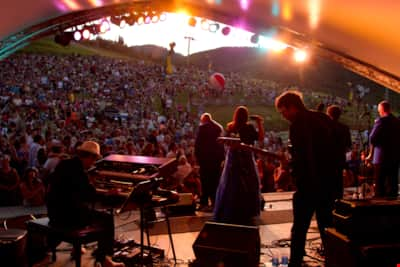
Deer Valley Music Festival
Snow Park Amphitheater, 2250 Deer Valley Drive, Park City
The summer home of the Utah Symphony and Utah Opera since 2003, the outdoor Snow Park Amphitheater offers the venue for classical concerts as well as modern tributes anchored by contemporary musicians. This picture-perfect setting marries music with the mountain vistas under starry skies.

The Egyptian Theatre
328 Main St., Park City
One of the West’s great historic theaters anchors Park City’s Main Street. The location was first the site of the Park City Opera House, which was consumed in the town’s great fire of 1898. The Dewey Theater was quickly built to replace it, which remained until the roof collapsed by the weight of snowload in 1916. In the 1920s, the theater was being rebuilt when all things Egyptian were the rage across the country after the discovery of King Tut’s tomb. This new theater in a silver mining town in a desert state in America had all the trappings of a faraway land. Golden decorations included scarabs, hieroglyphics, and leaf motifs.
Some 50 years later, by the late 1970s the theater had been neglected for years. When newcomers Randy and Debbi Fields (of Mrs. Fields Cookies) came to town, they agreed to help rehab the beloved space. The historic theater re-opened in October 1981. Today the theater operates year-round with local theater productions, concerts and as a host to Sundance Film Festival screenings. (Read: Sundance, Full Circle).
"On historic Main Street, there are a variety of places to sip and stroll and feel what it might have been like to live in a tiny one-street town."
Park City Film Series
1255 Park Avenue, Park City Library Auditorium
Since 1995, this local nonprofit has promoted the independent spirit of film and filmmakers inspired by the town’s hosting of the Sundance Film Festival (Read: Sundance: The Story is Utah). The film series operates year-round and shows mostly new, Art House-style films that might not be screened in more commercial theaters. The group partners with community organizations to present free screenings of documentaries and other films to spark community conversations, including topics ranging from domestic violence to global warming. Other initiatives include screening films made in Utah or by Utahns, as well as showing films outdoors in summer months.Visual Arts
The Kimball Art Center
1251 Kearns Blvd., Park City
The Kimball began in the 1970s in Old Town in a former horse stable turned-car garage. Bill Kimball, a Utah-born, San Francisco-based philanthropist, thought the emerging ski town needed some refinement and wanted a venue where regional artists could visit and display their works. Native Santa Fe-based oil painter R.C. Gorman displayed his work there in the late 1970’s. In later years, the popular space would host an exhibit of glass artist Dale Chihuly’s work, as well as an edgy Lego exhibit from New York City. Through the decades, the Kimball has offered art workshops and educational programming for youth and adults, anyone who wanted to learn how to paint and sculpt and weave.
The Kimball became a cultural hub presenting intimate plays and dance companies in pop-up shows, and hosted beloved Navajo rug shows. In 2016, the center moved off Main Street, and is now housed in a hip industrial space in the Prospector Square area. The Kimball is in talks with Park City’s government about building a permanent art center on city-owned property in the Iron Horse District.

Kimball Art Center takes great care to invite exhibitions that connect with national dialogues in both challenging and meaningful ways.

Kimball Art Center has served as Park City's creative hub since 1976.
The Kimball Arts Festival
Main Street, Park City
The arts nonprofit also organizes the annual Kimball Arts Festival, which has been in existence since sometime in the 1970s, depending upon who is counting. Artists from all over the country are juried into the show, exhibiting works ranging from carved wooden boxes and leather hand-tooled bags and saddles to bronze sculptures and fine jewelry. They display their art in the booths that line historic Main Street, which is closed to cars for three full days. Artists are happy to engage with viewers and buyers from their booths, while live music fills multiple stages during the day and evenings. This event traditionally is scheduled for the first weekend in August.
"The art at Gallery Stroll exhibitions is as varied as a winter sunset."
Gallery Strolls
Main Street Park City and surrounding neighborhoods
During the rest of the year, Gallery Strolls happen in Park City on the last Friday of the month. Galleries on Main Street – and throughout town – open and offer food, beverages and live music. The art at Gallery Stroll exhibitions is as varied as a winter sunset. Fine art bronzes, oils, watercolors and edgy pieces, many by artists attached to sister galleries in Santa Fe and Carmel, speak to the quality of the work.
New rotating exhibitions are offered by the Park City Summit County Arts Council. Award-winning artists — who work in oils and watercolors and fine jewelry and clay and photography — are artfully displayed. The quality is impressive. Check the council’s website for updated information.
Galleries on Main Street – and throughout town – open and offer food, beverages and live music.

Gallery Strolls happen in Park City on the last Friday of the month.
Art on the Trails
Cooper Moose Farmstand, 1285 Old Ranch Road, Park City
Since 2018, visitors and locals have been drawn to this beloved trail walk where art and performances can be found blooming around unexpected corners. The guided tours, held on the last Saturday in August (from 2 p.m. to 4 p.m.), take place on the McCloud Creek ADA path, which meanders along a creek shaded by willow trees. Some art events are timed, and past performances have included Utah Symphony musicians, ballet dancers, spoken word poets, aerialists, and a variety of visual and performing surprises.
The event begins and ends at the Copper Moose Farmstand, which offers treats, libations and live music. Often, the performances spark spirited conversations about art in the wild. This unique experience offers a great way to end summer on a beautiful high note, and promotes the work of local and regional artists and musicians. Visit the Arts Council website for updated information and to buy tickets.

The annually-held Art on the Trails event is organized by the Park City Arts Council and features local and regional talent across many disciplines.
Photo: Park City Arts Council

Enjoy the splendor of choreographed dance, the allure of a live painting, or the melodies of a string quartet, all beneath the quaking leaves of aspen trees.
Photo: Park City Arts Council
Art on the Road
Beyond town limits, in Summit County’s small villages of Kamas and Peoa you can find pop-up showings in artist studios in the summer and fall. Kranstover Gallery in Peoa (5642 S.R. 32; hours vary, call (435) 901-2007 for an appointment) shows the work of Utah painter William Kranstover. Artique (283 N. Main St., Kamas) shows a variety of Summit County artists. Sometimes, the giant two-story garage door might roll up, and inside you could spot a bronze sculpture from international artist John Helton, who creates towering works that sell for hundreds of thousands of dollars from New York to Dubai.
Coalville Ledge
Downtown Coalville
Sometimes you need a little insider information to find a quiet, semi-secret artistic treasure. The Coalville Ledge features faded petroglyphs and pictographs from the Fremont era on a sandstone face, as well as more recent historic graffiti from area settlers.
Many panels of Native rock imagery are hidden deep in Southern Utah canyons, and it takes a guide, plus a half-day hike to find them. Here, you can jump out of your car and wander the rail trail and see stories etched into rocks with symbols. It’s easy to contemplate who might have drawn images on the rock face in an attempt to communicate with the future. And then you realize these drawings are a kind of time traveler speaking from another time in this exact place. (Read: How to Visit Rock Imagery Sites Like an Archaeologist)
Directions: Head north on Main Street in Coalville past the Polar King Drive Inn at 128 N. Main St., where the road crosses Chalk Creek. Just past the creek, the trailhead is on the right for the Coalville Ledge.Watch Elizabeth Hora, Utah public archaeologist, discuss the Coalville Ledge imagery in a KSL news report.Mirror Lake Highway
S.R.150, Kamas
This is one of the most scenic drives in Summit County, which is saying something. It will take you into the Uinta-Wasatch-Cache National Forest, past a tiny bar and honky tonk, The Notch Pub, which has been going pretty strong since the 1970s. On this drive, you’ll also pass a large wooden sign with a cartoonish bear pointing to The Nudist Camp. Here’s the secret: There never was a camp. Some bored housewives back in the 1980s painted the sign and anchored it on the highway with an arrow pointing to what turned out to be a dead end near a beach on Mirror Lake. You can camp and fish and swim there. Every couple of years when the sign gets faded, somehow it gets brightly repainted again, which seems to encapsulate the spirit of Summit County.

Silver & Steam: 4 Ways to Explore Park City's Fascinating History
From a “mines and wines tour” to Utah’s most-photographed barn, check out these must-see-and-do sites to explore the workers’ history around Park City.





